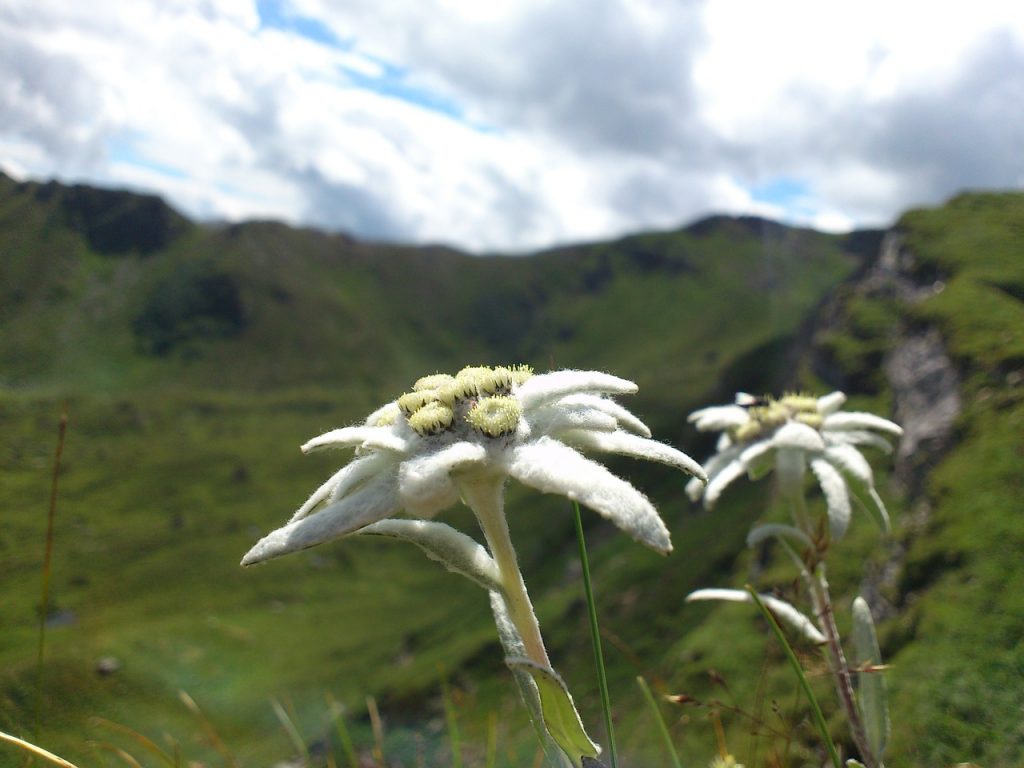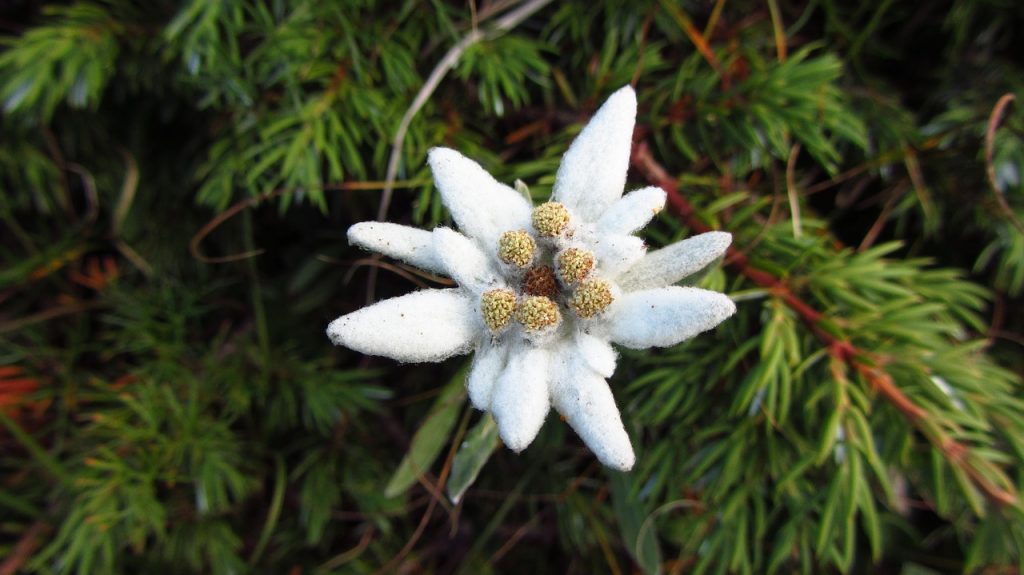The Edelweiss And Its Meaning Posted by Constanze on Aug 22, 2018 in Culture, Traditions
Guten Tag! Today’s post is all about Edelweiss. I have countless pieces of jewellery from Germany with the Edelweiss on it, but it was only recently that I stopped to wonder: Why, exactly, is the Edelweiss so symbolic of Germany? What does it mean? Why is it everywhere?
First of all, it came to my attention that the Edelweiss is more associated with Switzerland than it is Germany. It is actually a symbol of Switzerland, which is why you will see it used on many different brand logos, and even on Swiss money!
But you will also find images and prints of the Edelweiss flower in Germany – especially on the Bavarian Tracht (traditional dress) worn in southern Germany, like this Lederhosen below:
Here are some more facts about Edelweiss!
Edelweiss is a white flower with woolly, star-shaped petals.
Edelweiss grows in the Alps. It is a symbol of Switzerland, but also of Alpine Germany and Austria.
Edelweiss actually originated in the Himalayas, but over time it migrated to the Alps!
The word Edelweiss literally translates to ‘noble white’.
It is also sometimes called a Wollblume (‘Wool Flower’) or Klein Löwenfuss (‘Little Lion Foot’).
Originally, Edelweiss could only be found at very high altitudes, up in the Alps where it survived the harshest of winters. That is why this little flower is associated with strength and toughness.
It also came to be a symbol of courage, bravery and love; because of how high up the Edelweiss grew, if your partner were to bring you an Edelweiss flower, it would mean they have climbed up to a very high altitude to get it! Nowadays, however, the Edelweiss can be found much lower down (but is still a symbol of courage and love). 🙂
You will see the Edelweiss on certain Austrian army officials’ uniforms, and on those of the German mountain troops in the Bavarian Alps.
Two places you might recognise the word Edelweiss from are:
- The song ‘Edelweiss’ from the musical The Sound of Music. This song is using the symbol of the Edelweiss to talk about Austrian patriotism.
- The Edelweiss Pirates (die Edelweißpiraten in German), a youth group who opposed Nazi rule during World War II, and in particular rebelled against the way the Hitler Youth took away young people’s freedom during this time.
Now you know a bit more about Edelweiss. 🙂 Who would have thought a flower could have so much meaning, symbolism and history behind it? I hope this has been interesting!
Bis bald
Constanze

Build vocabulary, practice pronunciation, and more with Transparent Language Online. Available anytime, anywhere, on any device.










Comments:
Eduardo Ortega:
Keep it up,! Very interesting and original
Barbara:
Ich glaube das Edwlweiss steht unter Naturschutz und darf nicht geplückt werden. ( wenigstens in Österreich)
Helen:
Schöne Geschichte, I shared this on Twitter because it’s so beautiful and interesting, thank you!
Helen
Allan Mahnke:
Another great post! I had no idea that the flower originated in the Himalayas. It’s also ironic that many American’s believe that the song from “The Sound of Music” is actually an Austrian folk song!
veena:
Excellent post..thanks a lot
Jo Alex SG:
Aw, I first learnt about this flower´s existence when watching The Sound of Music as a five-year old and falling in love with the song (and many others in that majestic and iconic musical, of course). It actually became one of my childhood´s markers, together with many other songs from the beautiful musicals of the 60´s.
I have read about several other groups of the German Resistance but either I had forgotten about this one or hadn´t heard of it before so thank you so much for telling me about these brave youths and for all the lovely info bits on this iconic flower.
Also, as one who has loved the subject of Indo-European studies for decades, it ocurred to me that this flower then ended up enchanting Indo-Europeans from both East and West, being thus one more bond between these brethren cultures and languages through time and space.
It also occurred to me that both tulips and edelweisses seem to be flowers with a long history of presence in Indo-Europeans´ lives cause, though people think of the former as having its origins in Turkey, it is actually a flower deeply connected to the Kurds, whose tribes have a much older Indo-European culture, being a part of their ancient legends – and also of their southern cousins’ , the Persians, way before the Islamization of these peoples.
Vielen Dank for this lovely and educational posting!